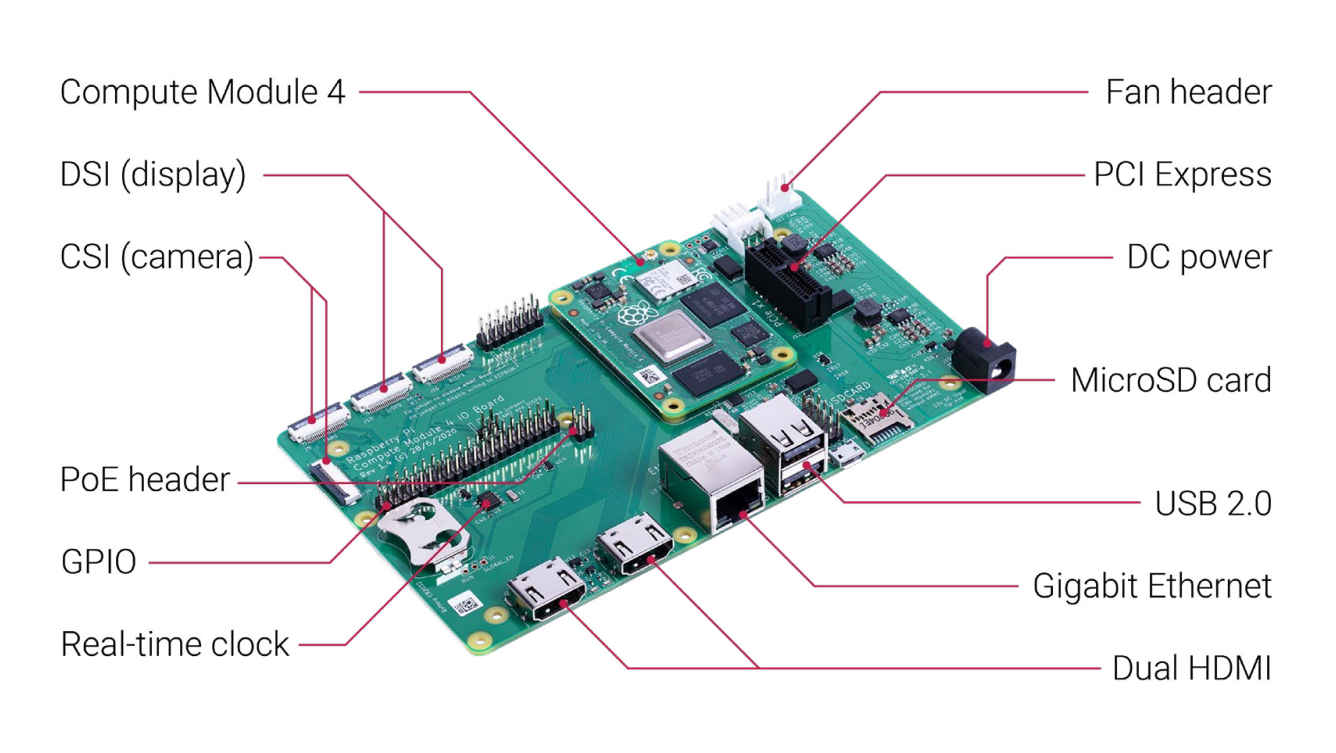| Pi Compute Module 4 - Time to Take Industrial Pi Seriously |
| Written by Harry Fairhead | |||
| Tuesday, 20 October 2020 | |||
|
It's been a long wait, but at last the Raspberry Pi Compute Module 4 is available and it's quite a departure from earlier compute modules. Is this enough to get the Pi a place at the serious IoT table? The Raspberry Pi 4 is a remarkable bargain, making it possible to contemplate doing things that would otherwise be economically or technically difficult. But the full Pi is often too much for a serious application, and this is where the compute module comes into its own. The compute module is a cut-down version of the Pi, with a form factor that makes it possible to plug it into a PCB of your own design.
Previous compute modules used JEDEC DDR2 SODIMM modules - that is you plugged it in as if it was a memory module. To make use of it you had to design a PCB that accepted the module as it if was memory. The new compute module has abandoned this approach and instead what you get is a small, credit-card size, module with all of the I/O brought out on two high-density connectors. Your PCB has to allow these to plug in and presumably hold the board with standoffs.
The other thing that is different is that you can customize the module in terms of the RAM, Flash and wireless. You can have wireless or no wireless, 1, 2, 4 or 8 GBytes of RAM and 0, 8, 16 or 32 GBytes of eMMC storage. A little arithmetic will tell you that this means there are 32 variants. The 1 GByte RAM, no wireless options are priced at $25, $30, $35 and $40 according to the amount of storage, the same as the comparable Compute Module 3. If you opt for everything then you get wirelsss, 8GB RAM and 32GB of onboard storage for $90.
The specifications are:
and this makes it a very powerful module. If you want a development system then there is the I/O board. You plug the module into the $35 board and you have the equivalent of a full Pi 4 plus a real-time clock and some extras. The I/O ports are brought out to external connectors:
You can also get a KiCad file for the layout to use as a starting point for your own design. Even though this is billed as a development board you might want to use it as a "better" Pi 4 because of its ability to work with different DC Power inputs, a PCI bus and RTC. So does this make the Pi a contender in the "serious" IoT/ embedded area? It most certainly isn't up to any application that is mission critical. It isn't rugged-ized and it has no redundancy. Any engineer currently involved in that sort of area is going to burst out laughing at the suggestion that the new compute module has anything to offer. However, there is a fairly large area of application that it does suit - anything that isn't mission-critical and needs a display screen and/or a camera and ???processing power of a desktop built into some other device. For this the compute module is looking like an interesting choice with a support community and potential lifetime that would be the envy of any alternative.
More InformationRaspberry Pi Compute Module 4 on sale now from $25 Related ArticlesRaspberry Pi 4 Sets New Performance High At Same Cost Raspberry Pi 3A+ Last Of The Line The Remarkable Rise of Raspberry Pi Pi Zero Wireless A $10 Birthday Present Raspberry Pi 3 Confirmed - 64-bit For $35 To be informed about new articles on I Programmer, sign up for our weekly newsletter, subscribe to the RSS feed and follow us on Twitter, Facebook or Linkedin.
Comments
or email your comment to: comments@i-programmer.info <ASIN:1871962633> <ASIN:B08KLNT2JC>
|
|||
| Last Updated ( Tuesday, 20 October 2020 ) |




